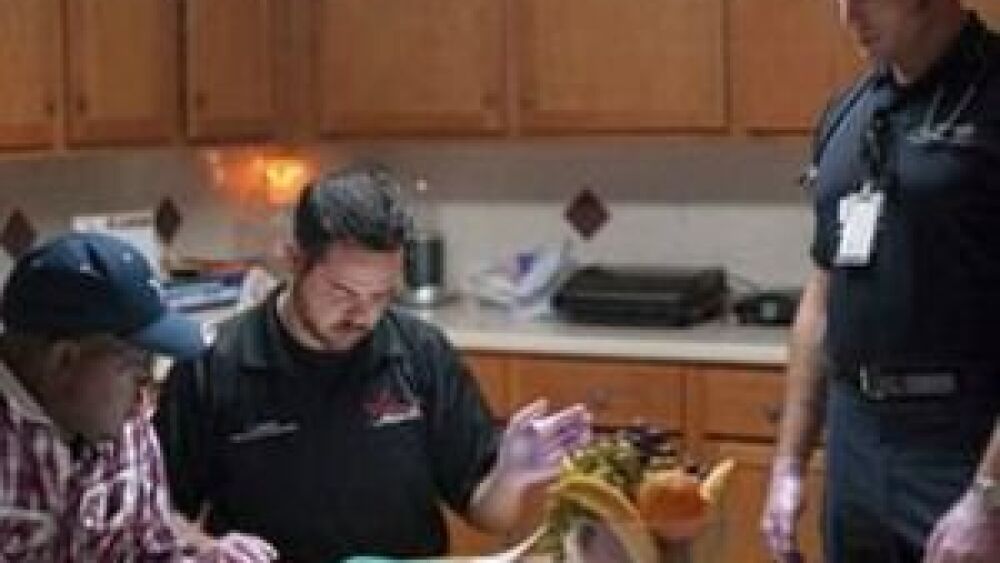Mobile integrated healthcare technician, community paramedic or tactical CNA, whichever moniker you choose, the future of prehospital medicine is upon us.
There was a time when people called 911 for emergencies. True, life-threatening, someone-is-bleeding-to-death emergencies. Now, we are an industry mired in calls for sore throats, possible COVID symptoms and persistent knee pain – due to a severe shortage of primary care providers.
The baby boomers are aging, and our 911 crews are being devoured by chronic health conditions deteriorated to the point of emergency. ERs are overrun with people who could be treated in an urgent care, were one available, and the collective healthcare community is gasping for air like an NFL lineman who just ran 4 miles straight. The EMS industry has to embrace a paradigm shift while we can still see the eight ball we are behind.
Chronic health conditions, such as congestive heart failure, diabetes, coronary artery disease, chronic obstructive pulmonary disorder and hypertension abound.
Further exacerbating the problem, is Dr. Google, always ready to provide our patients with the latest advice from the “experts” on homeopathic remedies. Sometimes, our patients are more informed thanks to the internet, but often, they are unfortunately misinformed. Primary care physicians are overloaded and in short supply across the country and don’t have the time to educate patients that they used to. Many patients don’t understand which medications to take, when to take them or which ones they should have discontinued three years ago. You have all seen the patient taking digoxin that was prescribed 4 years ago.
Not the hero the industry wants, but the hero the industry needs
Unlike Batman, the job of the MIH technician or community paramedic may not seem sexy, glamorous or even remotely desirable for those of us raised on adrenalin and bad coffee. However, MIH is the future of medicine. Why take the patient to medical care, when we can bring medical care to the patient? Just as Amazon pioneered the delivery of shopping to your living room, MIH is bringing patient care to the home as well. The concept of mobile integrated healthcare is not a new one, with various programs around the country pioneering the concept to where we are now. The first widely cited community paramedicine program was the Red River Project in New Mexico, circa 1993. Twenty-five years later, we are still working to initiate the vision of that project.
How do we adapt to the changing environment of EMS? It’s simple really. We have to move beyond our emergent response, lights and sirens, and unit 51 mentality. The truth is, we don’t respond to a great number of life and death emergencies anymore. What we do respond to are people who need help managing their chronic conditions, understanding their care plan, and staying on top of their medical conditions.
MIH is the answer, as we move into a world of connectivity, where we can bring a physician into the patient’s home via telehealth, and an advanced practice paramedic can implement physician orders on scene. MIH programs utilizing RNs and CPs can provide on site lab analysis via any number of commercially available apparatus, and CLIA waivers, in-depth assessments and real-time data transmission allow the entire patient care experience to be conducted at home in many cases. There will always be times that patients require transport to the ED, but far more often, we can manage these patients at home.
Think of the possibilities
If EMS wants to move beyond our position as the red-headed stepchild of the healthcare industry, we have to be part of the global solution. Far too often, we as EMS clinicians live in our silo, our blinders firmly in place to the rest of the healthcare continuum.
MIH is our opportunity to partner with other aspects of the healthcare community and develop innovative solutions within our communities – solutions which solve real problems. Funding these programs is not easy right now, but reimbursement models have come a long way, and there are methodologies to generate revenue streams which will support sustainable models. Though not as sexy and Johnny and Roy, MIH is the future of the industry. We can fight the change and remain in our silos, or we can embrace a new paradigm in a changing healthcare landscape and take charge of our destiny as an industry. Just for the record, I detest the term tactical CNA, mobile integrated healthcare is so much more.
Read next:
More than medicine
How to identify, onboard and manage community paramedics to succeed in their unique role in improving community health













